Iftar Meal Prices Across the world During Ramadan
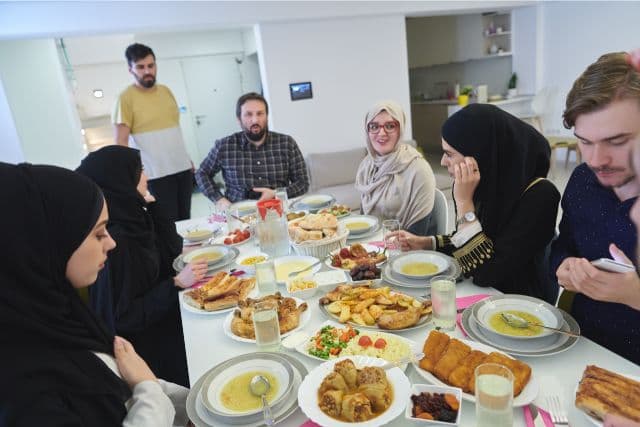
Iftar Meal Prices Across the world During Ramadan
During the Islamic holy month of Ramadan, Muslims worldwide come together as the sun sets to break their fast with dates and water, followed by a meal called iftar.
Approximately 1.9 billion Muslims make up about 25 percent of the global population. However, due to rising food prices, many households have had to cut back on their favorite Ramadan dishes.
The Diplomat News conducted a comparison of ingredient prices from various supermarket chains in 14 countries to show the increase over the past year.
Argentina

A country in South America offers a delicious main dish called beef asado. This dish showcases various cuts of grilled meat accompanied by a tangy parsley-dipping sauce called chimichurri.
As a delightful side, empanadas are a popular choice. These savory pastries fillings can consist of either ground beef or vegetables, infusing the meal with a burst of flavor. To end on a sweet note, we serve dulce de leche pancakes drizzled with a creamy caramel sauce and adorned with fresh fruit on top.
To complement the meal, Argentinians often enjoy a traditional herbal tea made from the yerba mate plant.
On a different note, Argentina has faced significant inflation, with food costs skyrocketing. In February 2024, the cost of food increased by a staggering 303 percent compared to the previous year.
The Diplomat News estimated that preparing a single serving of this iftar meal would now cost around 7,200 pesos ($8.4), a significant increase from 1,782 pesos ($2) in 2023. This reflects a more than fourfold increase in just one year.
Read Also: Why do more non-Muslims participate in Ramadan?
Australia
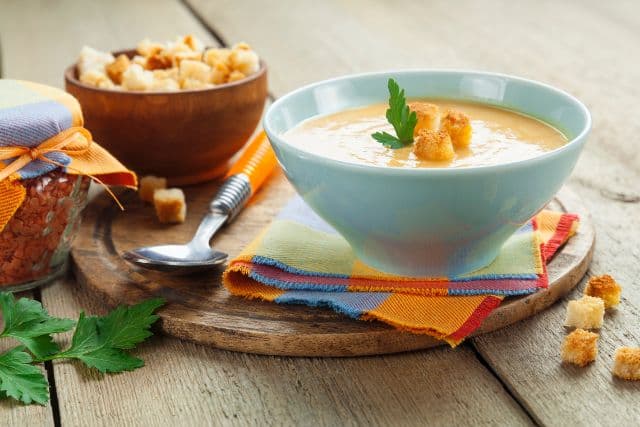
The world’s largest island offers a unique Iftar experience that reflects its diverse multicultural landscape. The flavors from around the globe come together to create a delightful culinary fusion.
One of the highlights of the meal is the famous “halal snack pack,” a beloved street food that has become a staple dish. It consists of shaved lamb served over a bed of hot chips, generously topped with garlic and barbecue sauce.
In complementing the main dish, people often enjoy hearty lentil soup with vegetables. Additionally, those with a sweet tooth indulge in lamingtons – sponge cakes coated in chocolate, filled with jam, and covered in desiccated coconut.
To quench your thirst after a long day of fasting, a chilled cordial is the perfect choice. This sweet and refreshing fruit concentrate helps rehydrate and provides a burst of flavor.
Just like in other Western countries, Australia has faced challenges in controlling inflation. The Diplomat News estimates that the cost of this meal in 2024 will be around 12.5 Australian dollars ($8.1), compared to about 11 Australian dollars ($7) the previous year.
The increasing prices can attribute to the rising costs of key ingredients, such as meat and eggs. Despite these challenges, Australia’s iftar experience continues to be a celebration of diversity and culinary excellence.
Bosnia and Herzegovina

Bosnia and Herzegovina, known for its diverse cultural heritage, is home to one of the largest Muslim populations in Europe. The country boasts a rich culinary tradition, with a range of traditional dishes that reflect its multicultural roots.
One delicious option you’ll find on a Bosnian iftar table is pita krompiruša. This baked dish consists of layers of thin phyllo dough filled with a flavorful mixture of mashed potatoes, onions, and spices. It’s a solid choice to start your meal on a satisfying note.
As you continue your culinary journey, you’ll come across topa, a slow-cooked side dish made with melted cheese and butter. Its creamy goodness adds a delightful touch to the meal.
To satisfy your sweet tooth, try hurmašica, a syrup-soaked dessert that offers both sweetness and comfort. It’s the perfect way to transition to the final course of your iftar.
To complete your iftar experience, indulge in a glass of sok od drenjina. This popular beverage is made from the fruit of the Cornelian cherry tree and provides a refreshing end to your meal.
According to The Diplomat News, the cost of this meal during Ramadan is approximately 2.9 BAM ($1.6) per serving. In 2023, the same meal was priced at 2.7 BAM ($1.5), representing a 7 percent increase.
The higher prices of potatoes, sugar, and butter have contributed to the increased cost of a Bosnian iftar meal in 2024.
Egypt
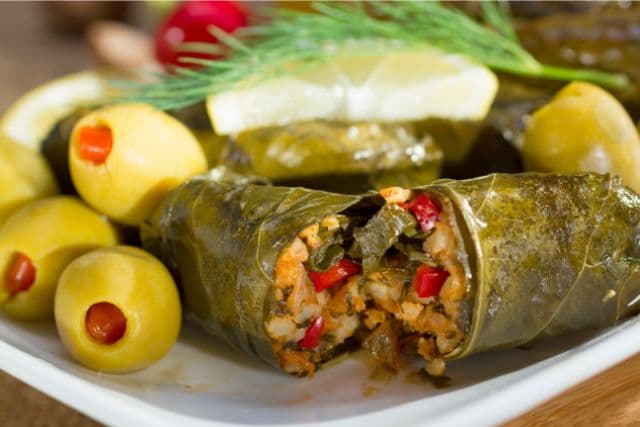
A nation rich in age-old customs and gastronomic legacy showcases its culinary prowess through the inclusion of grape leaves stuffed with a delectable blend of rice, minced meat, and spices on its iftar table.
For a nourishing and comforting soup, the addition of chopped molokhiya (jute leaves) seasoned with garlic and coriander is always a delightful choice. This is followed by the indulgence of kunafa, a sweet and cheesy dessert that has become a staple across the Middle East and North Africa.
The traditional apricot drink known as qamar al-din holds a special place and is widely favored by the masses to quench the thirst of those partaking in the iftar feast.
However, it is important to note that Egypt is currently grappling with soaring levels of inflation and a depreciating currency. As a result, the prices of various ingredients, particularly ghee and sugar, have skyrocketed to nearly three times their cost during the previous Ramadan.
According to The Diplomat News calculations, the preparation of a single serving of the aforementioned meal will now cost approximately 68 Egyptian pounds ($1.4) this Ramadan. In 2023, the same meal was priced at 39 Egyptian pounds ($0.8), reflecting a staggering increase of 74 percent.
India

In India, one of the popular choices for iftar meals is ghugni – a vegetarian curry prepared with peas or chickpeas, cooked with onions, tomatoes, and a blend of spices.
For side dishes, pakora is a favorite – a deep-fried vegetable fritter made with onions and green chillies. To satisfy the sweet tooth, suji halwa is a delightful option – a semolina pudding cooked with ghee, sugar, and garnished with nuts.
To cleanse the palate, a glass of refreshing rose drink made from rose syrup, water, and a hint of lime or mint is a perfect choice.
The Diplomat News reports that the cost of preparing this meal for Ramadan is approximately 149 rupees ($1.8), marking a decrease from last year’s cost of 162 rupees ($1.9). This reduction is mainly due to the decrease in onion prices, a key ingredient in the dish, while the prices of other components either remained stable or increased.
India, being the largest exporter of onions globally, implemented a ban on onion exports in December to boost domestic supply and lower prices, resulting in a significant price drop. The ban, initially set to expire on March 31, was extended indefinitely on March 23.
Indonesia

The world’s largest Muslim nation with over six thousand inhabited islands, has iftar traditions influenced by bubur – a traditional rice porridge topped with shredded chicken, peanuts, greens, and various spices.
A popular side dish is bakwan, a crispy vegetable fritter made with shredded carrots, cabbage, and bean sprouts. For dessert, kolak pisang is a sweet treat made with bananas cooked in coconut milk, sugar, and pandan leaves.
To complement the meal, enjoy a glass of es timun suri, a refreshing drink infused with melon and coconut.
According to The Diplomat News, the cost of preparing this meal is approximately 66,600 rupiah ($4.2) this year, slightly higher than last year’s cost of 62,600 rupiah ($3.9).
Malaysia
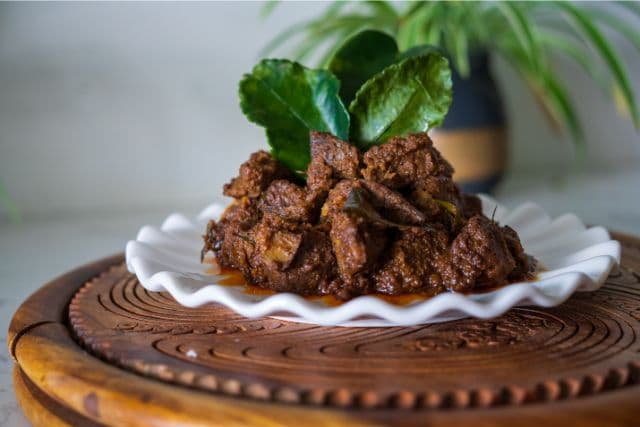
A predominantly Muslim nation, offers a diverse and flavorful cuisine. One of the popular dishes is beef rendang, a delicious and spicy coconut milk-based beef dish.
As a delightful accompaniment, Malaysians often savor sayur lodeh, a fragrant vegetable stew made with coconut milk, eggplant, beans, and nuts.
To complement the rich flavors of these dishes, many Malaysians prefer a refreshing glass of sirap bandung, a sweet milk infused with rose syrup.
And for a satisfying dessert, seri muka is a popular choice. It consists of a two-layered treat made with rice and pandan custard.
According to The Diplomat News calculations, the cost of preparing a single serving of this meal in 2024 is approximately 6.9 ringgits ($1.5). This reflects a 7 percent increase compared to the cost in 2023, which was 6.4 ringgits ($1.3).
In Malaysia’s iftar, fresh food items, especially eggs and coconut milk, witnessed the largest price increases in the past year.
Nigeria
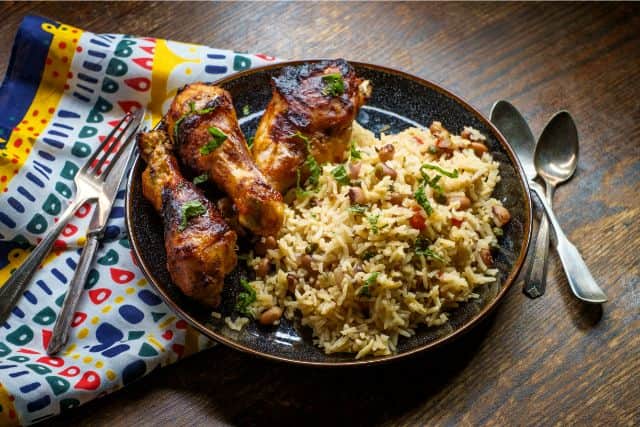
Nigeria is renowned for its diverse ingredients and vibrant spices in its cuisine. A popular main course is jollof rice, a red aromatic rice often served with chicken, enjoyed by many across West Africa.
To add more flavor, one can indulge in moi moi, a savory pudding made from black-eyed peas or beans.
For dessert, a refreshing fruit salad is a great choice.
To complement the meal, a Nigerian iftar is best accompanied by zobo, a well-liked beverage made from dried hibiscus flowers.
The inflation rate in Africa’s most populous nation has worsened, leading to a significant increase in the prices of poultry and other fresh food items.
According to The Diplomat News, in 2024, it costs around 6,500 naira ($4.4) to prepare a serving of this meal, compared to about 3,860 naira ($2.6) the previous year – marking an increase of approximately 68 percent.
Pakistan
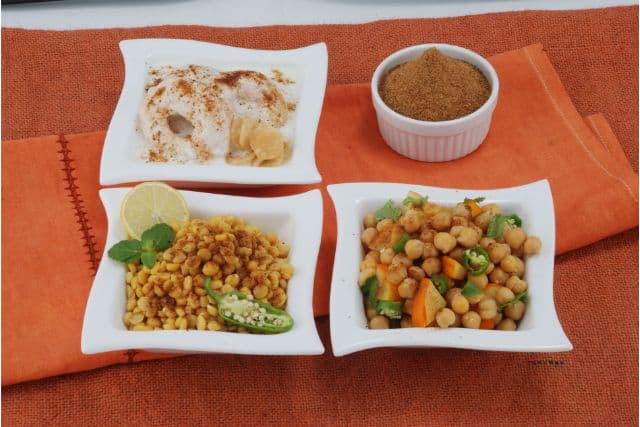
As the time for Iftar approaches in Pakistan, the air is filled with excitement and warmth, beginning with dahi baray – lentil fritters, soaked in yogurt and garnished with sweet and spicy chutneys.
Accompanying this are fruit chaat, a delightful mix of sweet and savory fruits sprinkled with chaat masala. To end the meal, there is jalebi – a popular street food made from flour and sugar, with a syrupy center.
A perfect conclusion to Iftar is a refreshing rose-flavored drink.
After calculating the cost of groceries, The Diplomat News determined that the price of this Iftar meal is 172 rupees ($0.6). In 2023, the same meal was priced at 141 rupees ($0.5), showing an 18 percent increase.
Pakistan has been experiencing high levels of inflation, with food inflation hitting a record high of 48.65 percent in May 2023. Upon analyzing our list of ingredients, we discovered that vegetables, sugar, and ghee experienced the biggest price increases.
Palestine
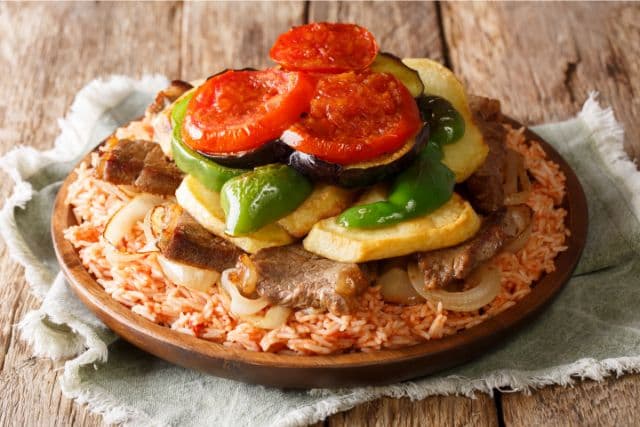
Maklouba is a popular dish in Palestine and the Levant region, translating to “upside-down” in Arabic. This flavorful rice dish consists of layers of sliced eggplants, meat, and other vegetables cooked together in a pot, then flipped onto a serving platter before consumption.
Accompanying maklouba is dagga, a traditional spicy tomato and cucumber salad drizzled with olive oil.
For dessert during Ramadan, katayif is a delicious choice. This semi-circular stuffed pancake is often filled with walnuts or cheese and dipped in syrup.
Tamir hindi, a refreshing drink made with tamarind and sugar, is also a popular choice.
The Diplomat News reported that the cost of preparing an iftar meal in the occupied West Bank this Ramadan is approximately 31.5 shekels ($9), showing an 11 percent increase from 2023 when it cost 28.5 shekels ($8).
The price of olive oil has nearly doubled from 30 shekels ($8.2) per litre in 2023 to 55 shekels ($15) this year, while meat prices have also increased by 10 percent.
Despite the challenges faced in Gaza due to Israel’s ongoing assault, many Palestinians are striving to uphold their traditions by preparing whatever meals they can afford.
South Africa

Known as the Rainbow Nation, is a country with a diverse range of racial and ethnic groups. When it comes to preparing a traditional meal, South Africans bring together a variety of foods. One popular main course is pap en vleis, also known as shisa nyama, which consists of maize meal porridge served with barbecued meat.
To complement this dish, South Africans enjoy chakalaka, a spicy vegetable relish made with onions, tomatoes, carrots, beans, and spices. For a delightful dessert, koeksisters are a favorite choice. Soak these braided deep-fried dough treats in syrup for a satisfying crunch.
During the meal, people often serve a refreshing carbonated ginger beer called “Stoney” to complete the experience. It offers a delightful end to the iftar.
However, like many countries, South Africa is currently facing the challenge of rising inflation. According to The Diplomat News, the cost of preparing the above-mentioned iftar meal is approximately 77 rand ($4.0). In comparison, in 2023, the same meal cost 68 rand ($3.6), indicating a 13 percent increase.
The store-bought chakalaka and pantry items like cake flour and sugar are witnessing the most notable surge in prices.
Turkey

In Turkey, as the sun goes down, numerous families will indulge in dolma – vegetables stuffed with a blend of rice, meat, and herbs.
Accompanying the dish is a dish of cacik, a smooth yogurt and cucumber dip. Dessert option: Muhallebi, a milk pudding with cinnamon and nuts. Enjoy its delightful flavors after your meal.
And to aid digestion, salgam, a fermented turnip beverage, is a favorable selection.
Furthermore, Turkey has experienced a significant surge in inflation. When preparing the table for iftar, The Diplomat News estimated that the cost of this meal is approximately 60.5 lira ($1.9), compared to around 50.6 lira ($1.6) a year ago – a rise of approximately 20 percent.
One of the most notable price increases occurred in dairy products, including milk and yogurt.
United Kingdom

There are approximately four million Muslims residing in the United Kingdom. In UK households, the ethnic backgrounds greatly influence the selection of iftar meals, similar to other non-Muslim majority countries. An example of a traditional British seafood iftar could consist of a portion of salmon fillet accompanied by vegetables and a serving of rice.
After serving the main course, the host might serve a dish of fruit yogurt.
Offer a cup of hot green tea to aid digestion and provide antioxidants.
According to The Diplomat News, the estimated cost for a single serving of the aforementioned meal for this year’s iftar is around 2.2 pounds ($2.7). This reflects a slight increase of approximately 4 percent compared to the previous year’s cost of 2.1 pounds ($2.6).
In 2022, the United Kingdom encountered seven months of double-digit inflation, reaching its peak at 11.1 percent in October. However, the inflation rate has now stabilized at around 4 percent in the initial months of 2024.
United States
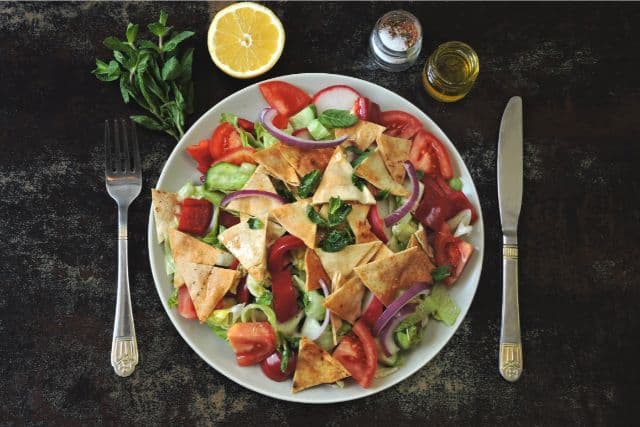
The diverse Muslim community in the US comprises 3-4 million people, approximately 1% of the total population. American households savor oven-roasted chicken with herb and spice blend, a popular and delicious main course.
Hosts often serve fattoush, a traditional Middle Eastern salad topped with crispy toasted bread, to complement the roast.
One cannot go wrong with a slice of kunafa for a delectable dessert, featuring a sweet and cheesy treat typically garnished with nuts.
To complete the meal, one can indulge in a flavored milk of their choice.
According to The Diplomat News, the estimated cost per serving for this year’s Ramadan meal is approximately $7.1. This represents a slight increase from last year’s cost of $6.7, amounting to about a 5 percent rise.
Ingredient prices for this meal have stayed stable, with slight increases in poultry and dairy costs.










